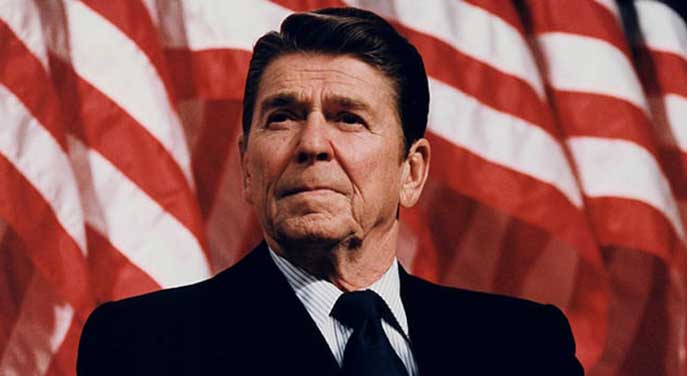 Something unusual happened in August 1981. Ronald Reagan, then president of the United States, fired the country’s illegally-striking air traffic controllers. Most observers were astonished. This wasn’t part of the normal political playbook.
Something unusual happened in August 1981. Ronald Reagan, then president of the United States, fired the country’s illegally-striking air traffic controllers. Most observers were astonished. This wasn’t part of the normal political playbook.
Increasing union militancy had become a prevalent feature of the economic landscape since the 1960s. And when faced with aggressive labour action where the strikers had apparent leverage, it was assumed that political leaders would bend. It was what everyone did.
The union was called the Professional Air Traffic Controllers Organization (PATCO) and was founded in 1968. The relevant regulatory entity was the Federal Aviation Administration (FAA), with whom PATCO’s relations had become very testy. As the union accumulated grievances, militancy blossomed.
There were, however, legal limits on what PATCO could do. Although President John F. Kennedy had introduced collective bargaining for government workers, there was no legal right to strike. Indeed, swearing an oath explicitly abjuring that right was a condition of controller employment.
Added to the mix was the fact that PATCO had endorsed Reagan in the 1980 presidential election, in the process of which he’d acknowledged that there were legitimate grievances. This led the union to believe that, if push came to shove, he’d be accommodating.
Over the years, Reagan’s August 1981 action has been cited as a deliberate exercise in union busting. But according to Georgetown history professor Joseph A. McCartin, that wasn’t the case. His Collision Course: Ronald Reagan, the Air Traffic Controllers, and the Strike That Changed America, tells a different story.
McCartin, let it be said, is a man of the political left. His heart is very much with the labour movement and he considers the decline of private-sector unions akin to tragedy.
 However, historical research is what it is and facts are facts.
However, historical research is what it is and facts are facts.
Reagan often spoke proudly of his past role as a union leader and had no desire to break PATCO. Nor did his administration. To quote McCartin, they “believed controllers had some legitimate gripes … and wanted to show that Reagan remembered his friends.”
What ultimately transpired, though, was a function of both union miscalculation and the temper of the times.
Having inherited double-digit inflation, elevated unemployment and soaring budget deficits, the Reagan administration was facing a situation where the conventional macroeconomic model no longer worked. Theoretically, you were supposed to be able to trade inflation off against unemployment. If one was too high, then you brought it down by accepting/facilitating a bit more of the other. They weren’t supposed to rise in tandem.
But theory and reality had parted company. You now had high inflation and high unemployment simultaneously. A new word – stagflation – was coined.
The Reagan administration faced a dilemma. It wanted to do something special for PATCO without blowing the economic recovery program out of the water by setting a precedent for other federal employees.
So it structured an offer that was financially much sweeter than the norm – McCartin and others described it as path-breaking – but tailored it to the specific details of the controllers’ work, thus making it difficult for other federal unions to demand the same. In the process, the relative generosity was deliberately underplayed.
At first, the union leadership tentatively accepted the “basic framework” of the deal. But the membership wanted no part of it. Accordingly, a strike was called for Aug. 3, 1981.
The accompanying demands encompassed a pay increase far in excess of the government’s offer, a 20 per cent reduction in the work week and improved retirement benefits. Anthony Selkirk, a Los Angeles controller who opposed the strike, described the union’s action as “suicide.”
Reagan’s response was immediate. The strike was illegal and contrary to the controllers’ sworn oaths. If they didn’t return to work within 48 hours, they’d forfeit their jobs.
Initially, the strikers believed he was bluffing. No politician would dare to follow through with such an action. Besides, they had the power to significantly close down aviation.
However, support from other unions was muted. And with the controllers already earning salaries above the national median, public sympathy was in relatively short supply. PATCO found itself isolated.
Two days later, Reagan made good on his word. The 11,345 controllers who’d refused to return to work were fired. And the FAA quickly cobbled together a replacement apparatus using, among others, non-striking controllers, supervisory staff and the military.
The commentator George Will put it this way: “In a sense, the ’60s ended in August 1981.”
Troy Media columnist Pat Murphy casts a history buff’s eye at the goings-on in our world. Never cynical – well, perhaps a little bit. For interview requests, click here.
The views, opinions and positions expressed by columnists and contributors are the authors’ alone. They do not inherently or expressly reflect the views, opinions and/or positions of our publication.
© Troy Media
Troy Media is an editorial content provider to media outlets and its own hosted community news outlets across Canada.

